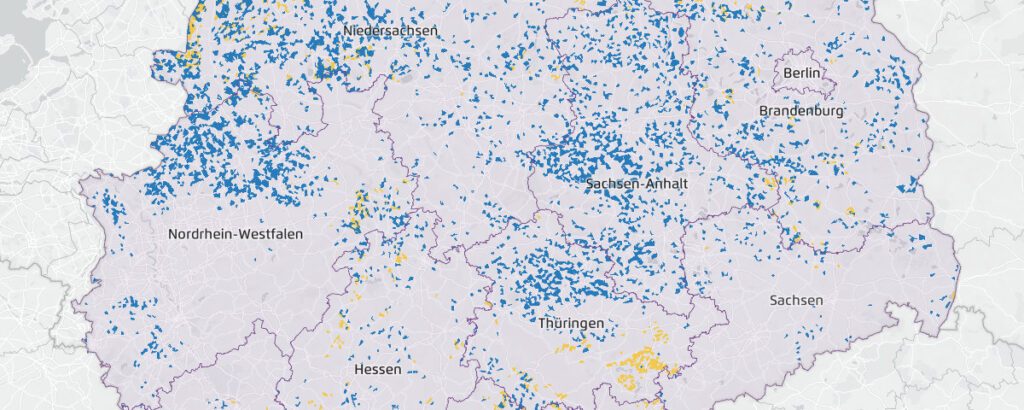PV and Wind Area Calculator published by Agora Energiewende
October 15, 2021 | To achieve its climate targets, Germany must use two percent of its surface for wind energy. But conflicts over site selection for new wind turbines and species protection are currently hampering expansion. The think tank Agora Energiewende has commissioned Reiner Lemoine Institute to develop an online tool that shows where the largest area potentials lie. Based on the tool, Agora presents an analysis on how to better reconcile wind energy and species protection.
For a good third of the electricity in Germany to come from onshore wind power in 2030, there is an urgent need for more areas for the construction of new wind turbines. The potential is there, but in many places blanket rules about distances to settlements as well as the general exclusion of forest or landscape conservation areas hinder the expansion. However, to achieve the goal of a climate-neutral Germany, two percent of the country’s land surface is needed for wind turbines – twice as much as is currently being used. But where is the greatest potential in Germany? A new online tool developed by RLI on behalf of Agora Energiewende and with the support of the Reiner Lemoine Foundation can be used to identify suitable areas for the expansion of onshore wind energy needed to meet climate targets. The tool is also able to identify possible locations for ground-mounted photovoltaic systems, for which just under one percent of Germany’s land area will be needed in the future. In this way, the required expansion of ground-mounted PV and onshore wind energy plants for a climate-neutral power supply can be visualized.
The tool uses publicly available geodata to identify areas on the map of Germany that are potentially suitable for ground-mounted PV and wind energy. For example, users can vary the distances of wind turbines from settlements. This makes it possible to see which potential areas become available by removing blanket minimum distance rules. Likewise, the partial use of forest areas as well as landscape protection areas can be selected – these areas hold unused site potential wherever no ecological criteria are affected. The settings can be made separately for each federal state and the designated areas can be displayed down to the municipal level. Whether an area is actually suitable requires further review with stakeholders on-site.
“The tool shows: We have more than enough space for renewables. Tripling the expansion of renewables for a climate-neutral Germany is therefore not a question of space, but primarily a question of political will,” says Patrick Graichen, director of Agora Energiewende. “We therefore need a differentiated consideration of suitable sites.”
The PV and Wind Area Calculator is available for free use on the Agora website. In addition to the tool, detailed documentation and a tutorial are available. On October 28, the developers from RLI and Agora will jointly present the tool in a webinar.
To the PV and Wind Area Calculator
To the press release of Agora Energiewende
More on the technical background
